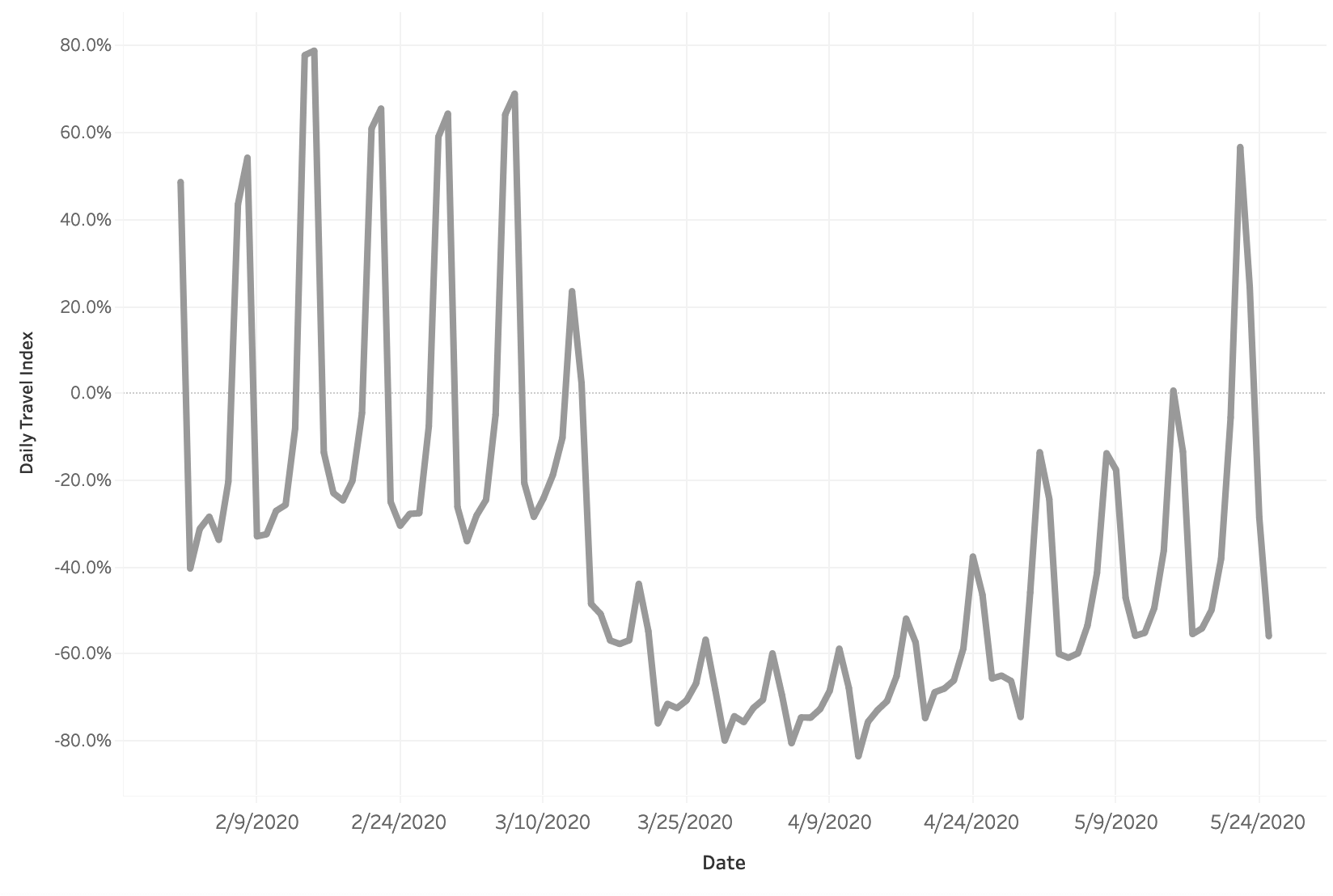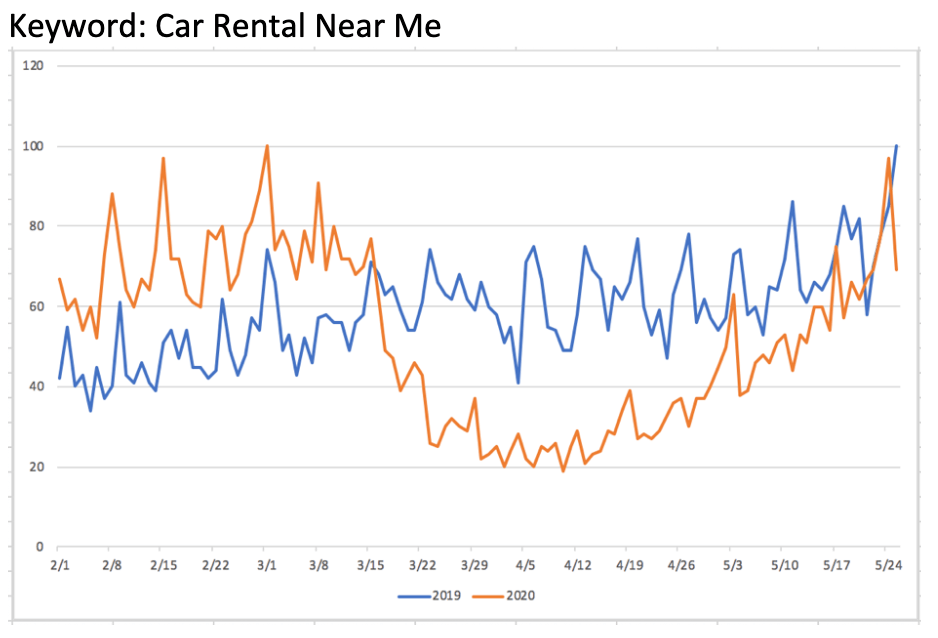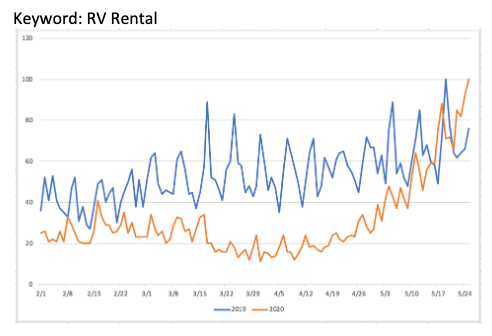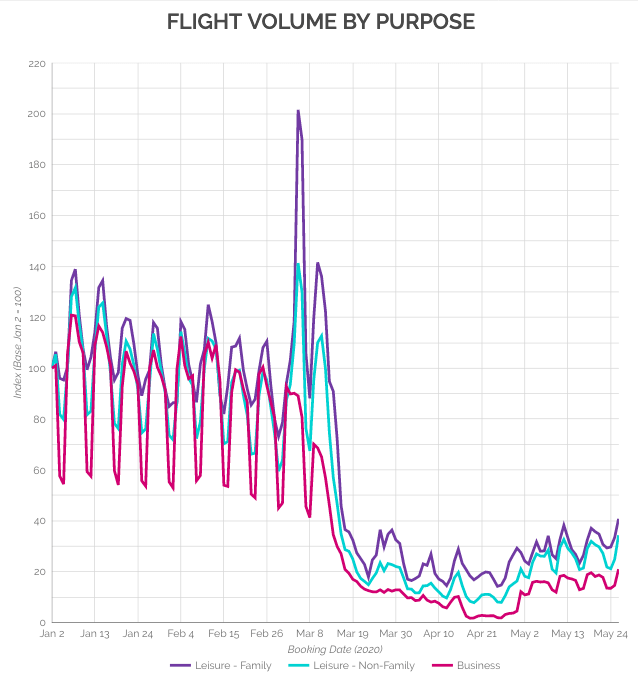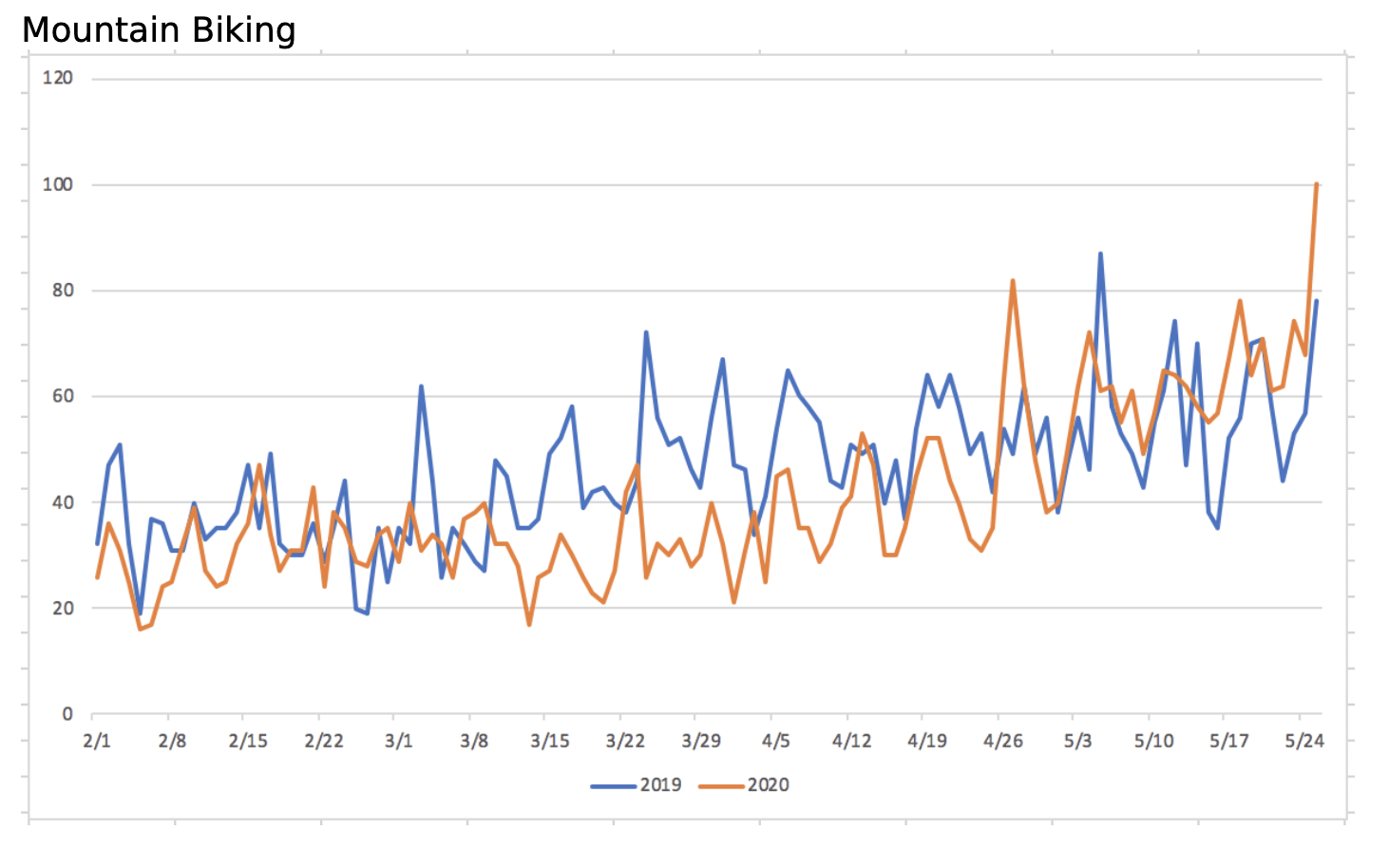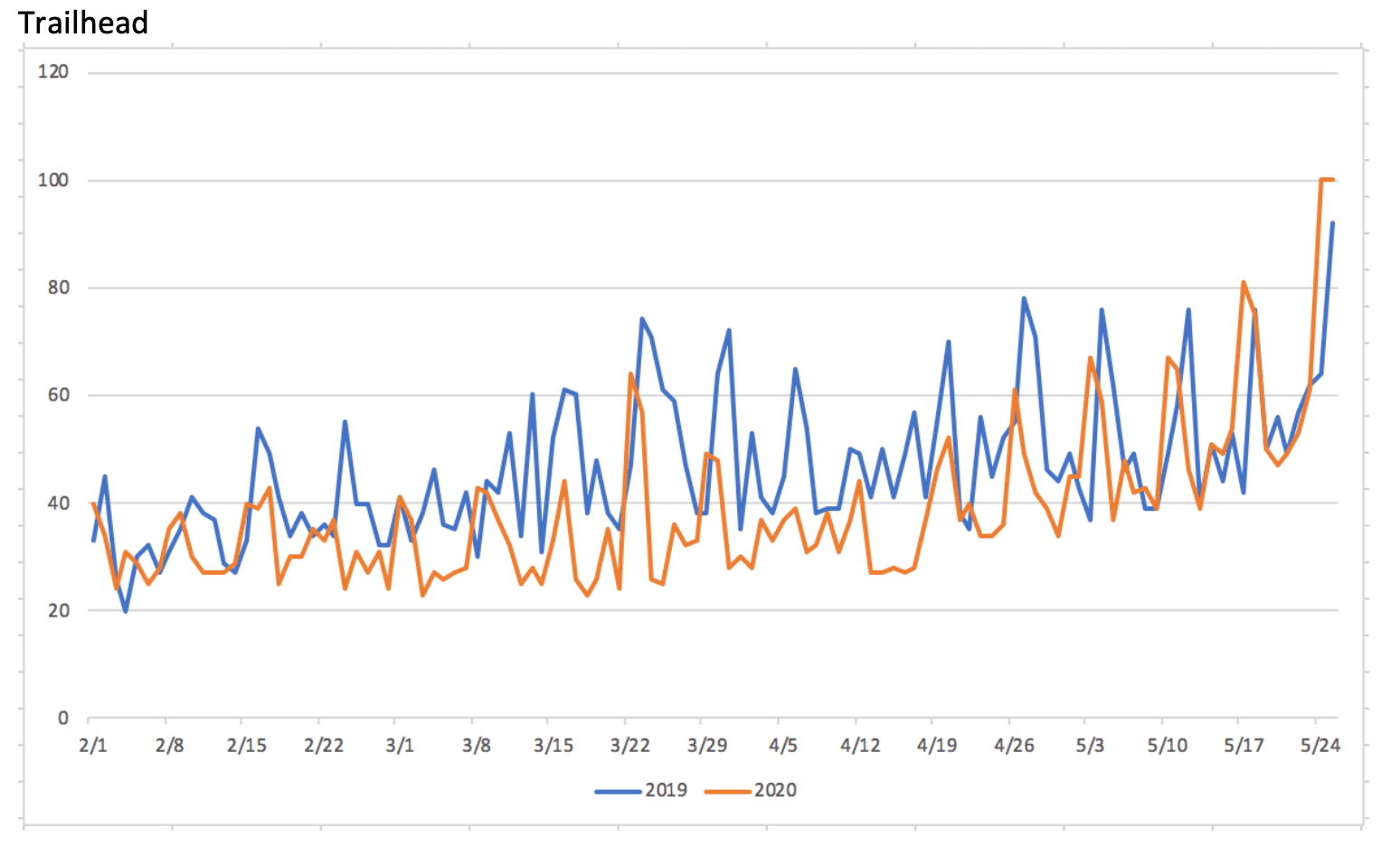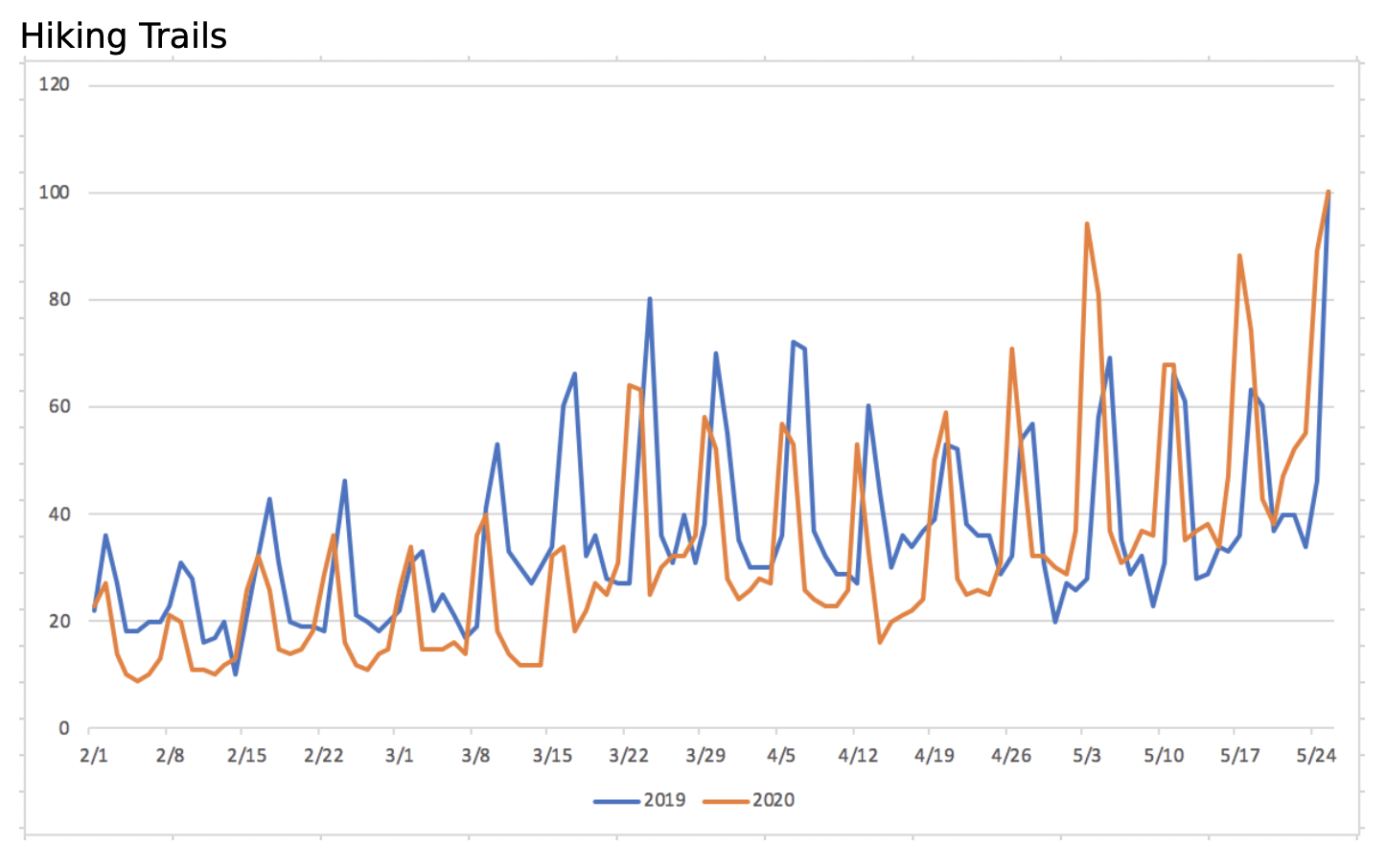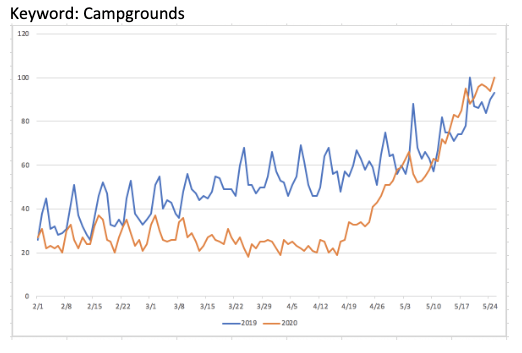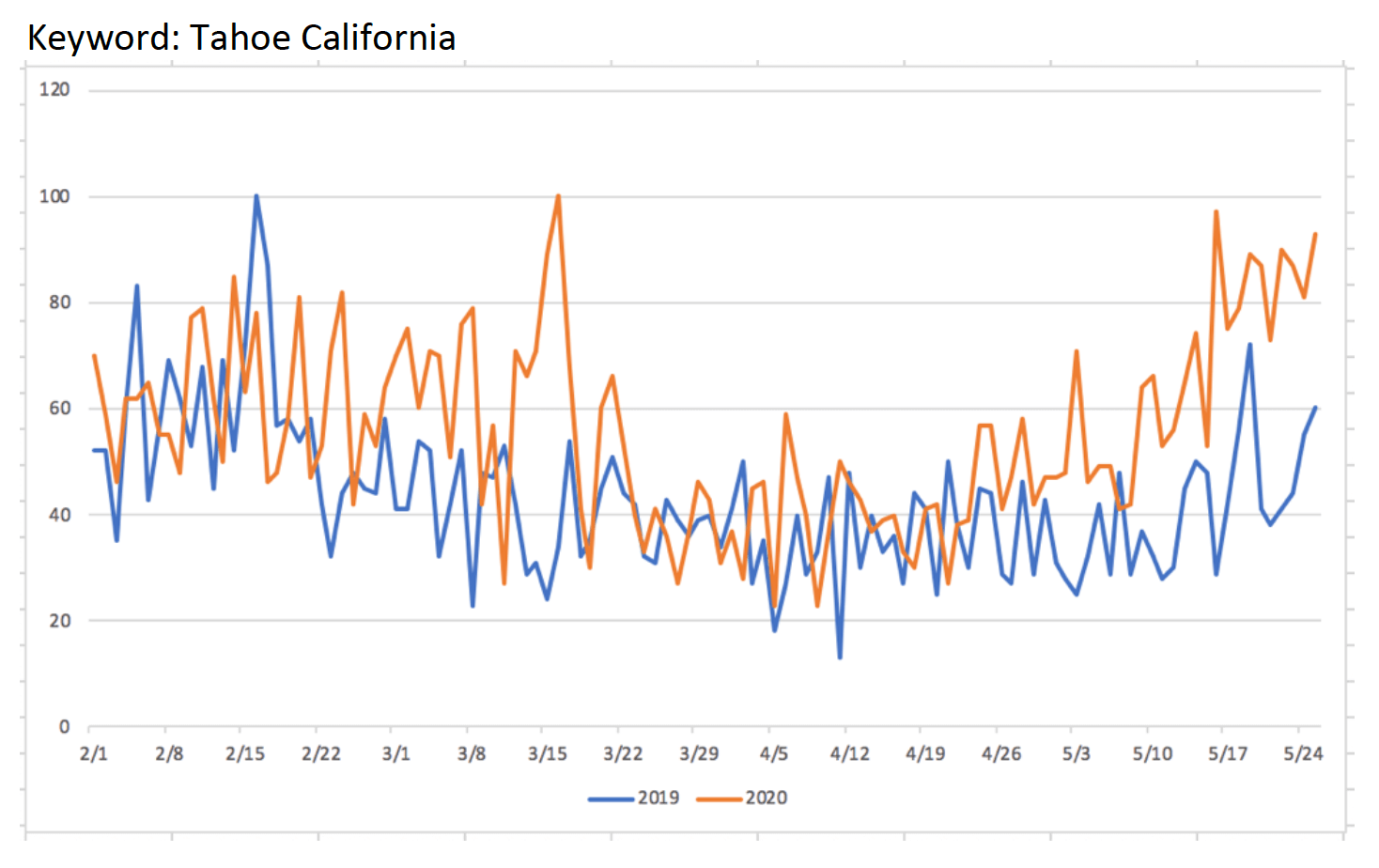Travel Trends: Memorial Day Weekend
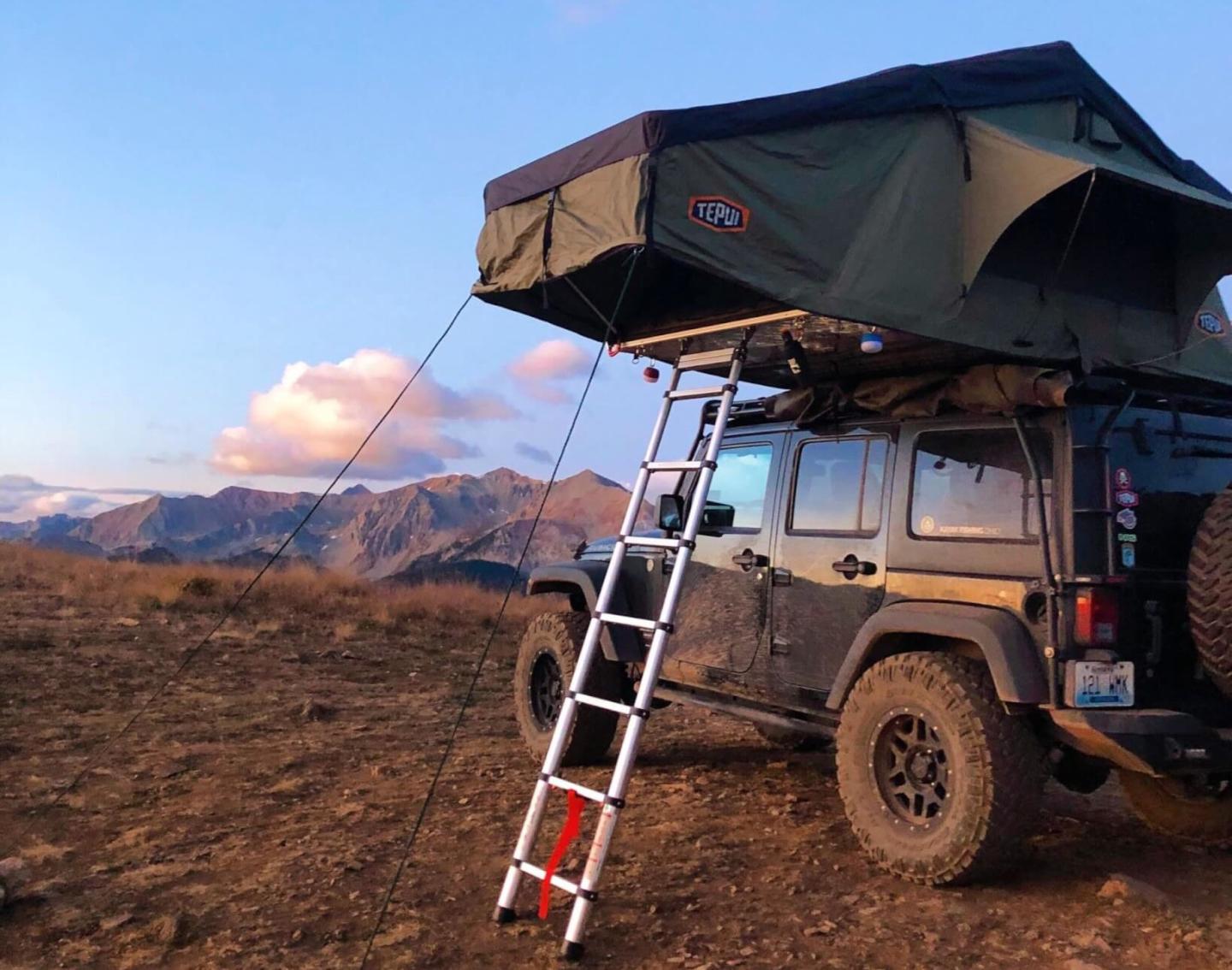
What did travel look like this Memorial Day weekend?
Arrivalist travel index data shows that Memorial Day was the first significant spike in travel since before the COVID pandemic hit the U.S. Drive travel increased nationwide, with regions in the south and west of the U.S. showing the most significant increase.
Hotel bookings also saw a large week-over-week spike for the holiday weekend, showing the highest bookings since mid-March — not surprising, as this weekend coincided with the re-opening of many of these properties.
Takeaways: Booking numbers are still well below Memorial Days of the past decade, but these positive trends help to imply continued growth of consumer confidence in travel for this summer.
How did people travel?
By Car: Overall, road trips saw almost a 50% increase over previous weekends in May. These numbers are back up to a level near pre-COVID 2020. Car travel of over 250 miles saw the largest spike with an increase of more than 150% over previous weeks.
The new “nearby”: The definition and ranges of what previously had been considered a “drive market” may be expanding to a much larger radius. A research study from Condé Nast suggested that 64% of those surveyed would now be likely to travel 7+ hours in their car.
Car rental searches on Kayak also saw a 65% increase leading into the weekend.
Google searches around car rentals and RV rentals spiked week over week, reaching volumes similar to that of 2019.
By Air: According to TSA data, flight travel reached its largest numbers since the start of the COVID outbreak in mid-March with over 345,000 daily passengers. This is more than double the numbers the TSA had been reporting over previous weekends in April and May.
Takeaways: With low gas prices, low confidence in air travel, potentially more time off and increased desire to find open space, road trips and car-related travel will remain the dominant travel trend for the near future. Potential increases in longer road trips this summer may bring growth for “along the way” destinations and lesser-visited regions of the country. There is potential for accelerated growth in the “van life” and RV sector.
How did this weekend compare to 2019 or previous years?
For comparison, the TSA’s daily numbers were around 2.7 million on Memorial Day weekend in 2019, and in 2020 there was a decrease of over 75% year over year.
While drive travel was significantly up week over week, it was still slightly below pre-COVID 2020 spring break travel and below 2019 road trip travel.
Takeaways: The travel landscape is certainly not back to normal but is trending in the right direction for summer travel.
When will travelers feel comfortable getting on planes again?
Flight bookings have still not shown any significant increase for short- or long-term flights. Flight searches across online booking platforms and direct airlines for both short- and long-term flights are still down by more than 90%.
Survey data from readership of Matador Network show less than half of travelers who planned on out-of-state travel felt comfortable flying in the near future.
Should your brand write off consumer air travel in 2020?
It’s hard to say. Current data suggest little traction in flight bookings or consumer confidence in air travel. However, airlines in the U.S. are estimated to be sitting on over $10 billion in customer cash in the form of vouchers and flight credits from trips postponed during late March, April and May. Many of these airlines require those credits to be booked within 2020 (i.e., reservations made in 2020, not necessarily flights occurring in this year).
Takeaways: Proceed with caution. While there is a large potential for air travel to rebound, there are also a lot of risk factors that significantly hold back consumer confidence.
Where are people traveling? (Hint: The Outdoors)
In the days leading up to Memorial Day, Google search trends pointed to a spike in outdoor-related terms, reaching higher numbers than previous years.
National Park visitation was previously on the rise with over 327 million U.S. park visits in 2019, and the Parks Service is preparing for similar or higher visitation this summer.
Product sales in the overall outdoor industry have seen a decline in recent months of around 11% due to closed retail locations. However, as those stores start to open, along with continued growth of e-commerce sales, industry experts predict overall growth for this summer. Some categories such as kids’ bikes and recreation tents have already seen significant growth.
Travel research website TripAdvisor has noted that searches are pivoting from urban destinations to locations with more open space and camping options.
Takeaways: Expect accelerated growth to an already growing outdoor travel industry.
How are travelers finding information?
With more time behind screens at home, constantly changing regulations and restrictions, and new expectations around how to travel, travelers are conducting more research than ever, from early travel inspiration to searching for specific current travel data.
Inspirational travel publishers such as AFAR have seen an increase of over 50% in month-over-month web traffic.
Over the last two weeks, The Outbound Collective has reported an increase of more than 20% in visitors saving outdoor-related trip planning tools across their site.
Simpleview (a destination website hosting company) reports that web traffic across DMOs has bounced back to match 2019 numbers with consumers researching local information around restrictions and rules.
Backbone’s own tourism destination clients are seeing up to 40% of their total web traffic centering on updates around restrictions, safe travel and current travel policies.
Overall search volume around travel destinations is also up. See the Lake Tahoe search trends as an example below.
Takeaway: 2020 travelers comprise a captive audience looking for information around where, how and when they can travel.
